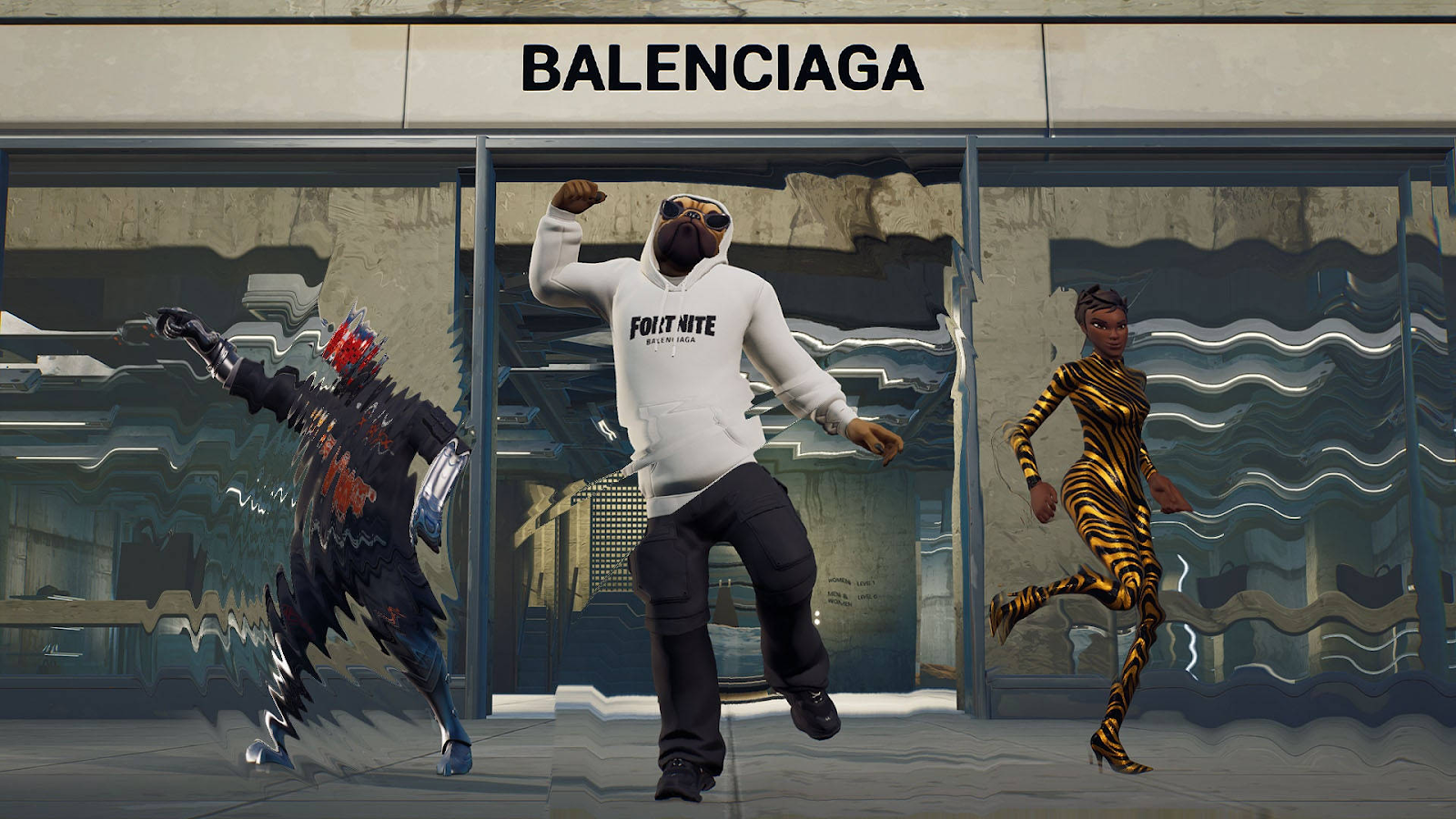Whether it’s an insight into the future of fashion or a passing fad, the metaverse is already making waves in the way that we wear clothes and follow trends. But will we ever see digital fashion fully emulate its traditional counterpart?
If the gaming industry is anything to go by, there’s certainly a major market to be explored when it comes to metaverse fashion. In the world of video games, $100 billion is spent annually on virtual goods. With more than three billion video game players around the world-of which 46% are women, there’s certainly an audience ready for digital goods.
Video games make for a great starting point when exploring the viability of metaverse fashion. We’ve even seen metaverse-facing games like Roblox and Fortnite partner with leading fashion houses to deliver ‘skins’ for users to decorate their characters in stylish clothes.

One leading example of high fashion’s relationship with video games came from Balenciaga partnering with Fortnite to offer players premium add-ons to decorate their in-game avatars.
“The next generation of designers are dressing avatars, and they are doing it on Roblox where anyone can be a creator, starting with their own online identity,” said Christina Wootton, vice president of Brand Partnerships at Roblox. “Fashion is about what’s next and finding new voices with clear visions, and this talent is emerging in the metaverse.”
“It is the global creative space for the next generation of designers who are bringing limitless self-expression opportunities to people around the world, setting new trends that are starting to move into real life, and sharing their expertise with top brands. This recognition from a powerful fashion institution declares loud and clear that this is the space to watch for future fashion trends and talent.”
By taking a similar concept to downloadable in-game content today and optimizing it with burgeoning technology like NFTs, it’s possible to create digital fashion that can actually belong to the user and be traded and sold on like real clothing items. But is metaverse fashion really here to stay, or does it simply represent another trend in the world of fashion?
Exploring Fashion’s Passion for the Metaverse
Statistically speaking, it’s clear why leading fashion brands are passionate about growing into the metaverse. Data from McKinsey’s State of Fashion 2022 findings notes that ‘personal expression is important to Gen Z’, and it’s through partnering with technology that brands can seek to appeal more effectively to younger fashionistas.
When fashion house Gucci launched its own metaverse project, The Gucci Garden in 2021, the virtual space received 19 million visits. The brand even sold a virtual handbag in the same year for $4,115, a price that weighs in far higher than its physical handbags.
To be capable of multiplying your market to accommodate digital goods as well as physical goods seems like a no-brainer for brands. In the metaverse, all products can forever be in pristine condition and unweathered, and any avatar wearing a Balenciaga t-shirt offers free promotion to the brand wherever they virtually go.
Social media has often shown through Instagram and TikTok filters that users are happy to transform their faces to look more like an animal, robot, alien, or any historical figure, and this can indicate that fashion designers can go as creative as possible in offering new clothing and accessories for users.
In McKinsey’s latest State of Fashion 2023 report, it was suggested that fashion brands should seek to “embrace creative campaigns and new channels to achieve greater marketing ROI and to gather valuable first-party data that can be leveraged to deepen customer relationships.”
This means that the metaverse must be focused on as a space for brands to deliver virtual lines to not only expand revenue streams but also build customer loyalty. This doesn’t have to be limited to clothes, and should somebody want a pair of Vera Wang glasses for their avatar, it’s possible to tap into a range of real-world high fashion spectacles to get the right pair to wear in the metaverse.
Metaverse Fashion Won’t Mimic IRL
Despite the fashion industry identifying the metaverse as a key market opportunity, it’s unlikely that virtual trends can truly mimic the patterns followed by their in-real-life counterparts.
Trends in the metaverse wouldn’t have any need to adapt to seasons. There’s little use in users buying a bulky coat in winter and a t-shirt in summer when their avatars are simply an extension of their personality in a controlled digital environment.
It’s also unlikely that shoppers will buy a range of digital clothes as substitutes in their wardrobe, making it difficult to see consumer spending reach the levels that we see in traditional fashion today. Furthermore, even if an uptick in virtual fashion spending took place, it’s more likely that this would replace traditional fashion spending, rather than combine forces with alternative approaches.
There’s also the matter of the carbon footprint attached to the minting of NFTs. While the fashion industry has long had a difficult time in managing its own carbon emissions, creating NFTs that act as proof of ownership of digital goods can be damaging to the environment in their own way.
Despite this, there’s still plenty of potential that can be explored when it comes to metaverse fashion. As the technology continues to develop, we’re likely to see fashion fall into a more natural rhythm to complement virtual spaces. Whether we’re all going to be donning our Gucci handbags to go to work in the metaverse by the end of the decade or not, we’re likely to see more high fashion brands seek to build into this new technological frontier in innovative ways over the coming years.
The post Can Metaverse Fashion Ever Emulate Traditional Fashion? appeared first on Datafloq.

